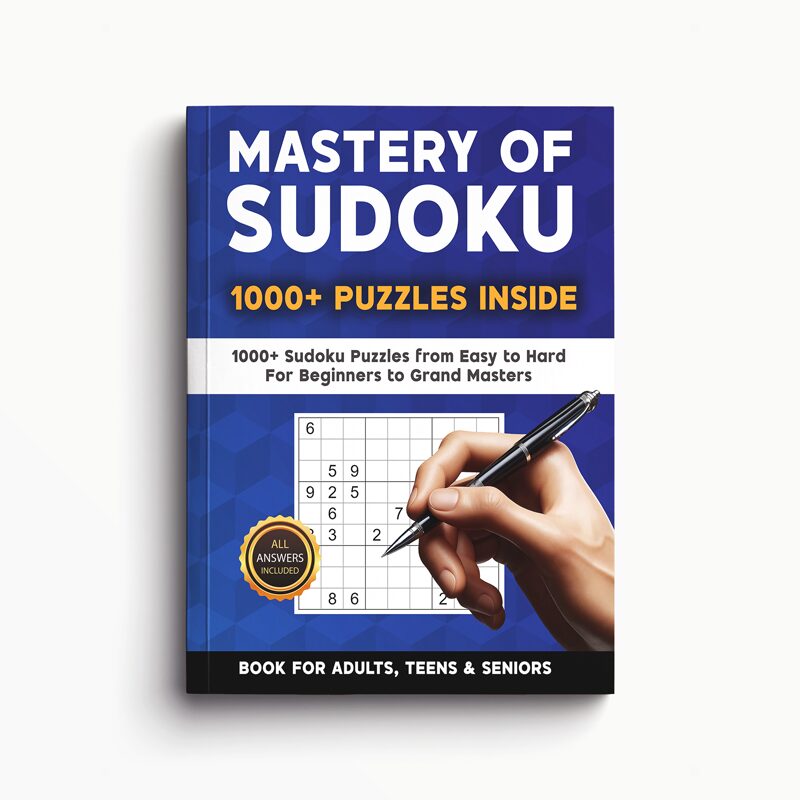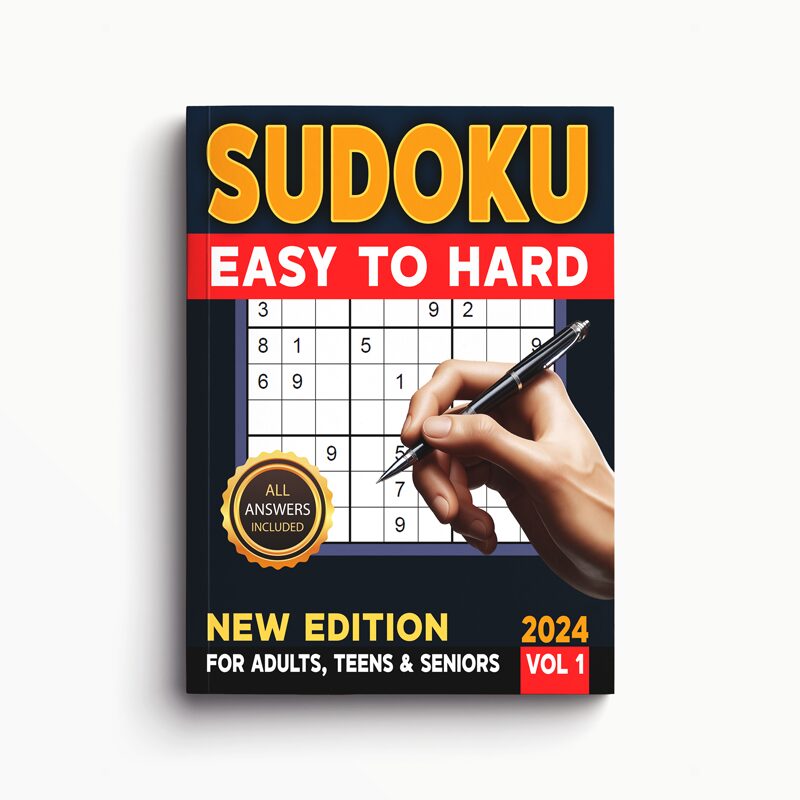How to Play Sudoku Puzzles
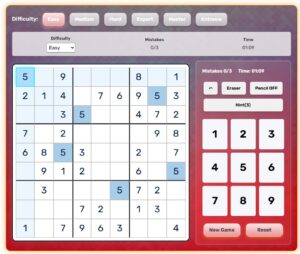
Sudoku is a popular number puzzle played on a 9×9 grid. Each puzzle begins with some cells already filled with digits, and your challenge is to fill in the rest. The rules of Sudoku are straightforward but lead to incredibly rich gameplay. Despite using only basic digits, there are over 6.67×10^21 possible Sudoku grids, enough to give you a lifetime of puzzles to solve! Sudoku’s simple constraints hide a deep well of logical challenge, making it a perfect brain-teaser for a quick mental workout or a daily relaxation ritual.
Researchers have found that regularly solving puzzles like Sudoku can help keep your mind sharp. For example, a 2019 study in the UK found that adults who frequently engaged in number puzzles had the mental function of people 8–10 years younger. In short, solving Sudoku is not just fun – it’s good for your brain and can improve your concentration and reasoning skills over time.
In this comprehensive Sudoku guide, we’ll cover all the Sudoku rules and give you expert tips for solving Sudoku puzzles. Whether you’re a complete beginner or brushing up on the basics, you’ll find clear explanations, examples, and strategies to boost your confidence. Feel free to grab a pencil (or open our online Sudoku game) and play along as you learn. Ready to boost your brainpower and have some fun? Let’s dive into the rules of Sudoku!
Understanding the Sudoku Puzzle
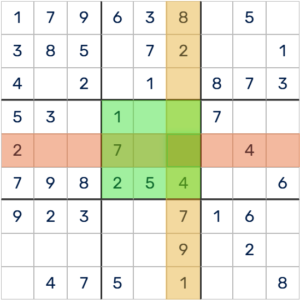
Sudoku is played on a 9×9 grid divided into 3×3 subgrids (often called “blocks” or “boxes”). At the start of a Sudoku puzzle, some cells are pre-filled with numbers (these are your givens or clues). The goal is to fill in the empty cells so that every row, every column, and every 3×3 block contains all the numbers 1 through 9 exactly once. In other words, you must use each number without repetition in each row, column, and block. When the puzzle is completed correctly, this single rule is satisfied across the entire grid, and the solution is a kind of numerical mosaic where every row, column, and block is a permutation of 1–9.
A partially filled Sudoku puzzle grid with color-coded given numbers, illustrating a typical starting Sudoku layout. Each colored cell is a given (pre-filled clue). The objective is to fill the blank cells so that each row, column, and 3×3 region contains the numbers 1 through 9 exactly once. For example, in the puzzle shown above, you can see some rows already have several numbers in place. As a solver, you would look at the empty cells and figure out which numbers are missing in each row, column, and block. By logic and elimination, you determine the correct number for each empty spot until the entire grid is filled in validly.
A well-designed Sudoku puzzle has a unique solution, so if you follow the logic step by step, you will arrive at one complete and correct grid. It’s important to note that Sudoku does not require math or arithmetic skills – despite using numbers, no addition or subtraction is needed. Think of the digits 1–9 as simply nine distinct symbols. The challenge is in placement and pattern, not calculation. In fact, you could play Sudoku with letters or colors instead of numbers and the game would be the same!
What makes Sudoku engaging is the logical thinking required to deduce each number’s placement under the puzzle’s constraints. Understanding these constraints (the rules) is the first step to becoming a Sudoku solver.
The Basic Rules of Sudoku
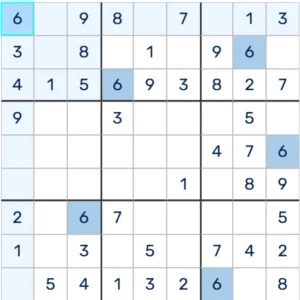
At its core, Sudoku has one simple rule: each number 1–9 can appear only once in each row, each column, and each 3×3 block. This rule can be broken down into three specific constraints:
Row Rule: Each row of 9 cells must contain the digits 1 through 9 once each (no repeats in a row)
Column Rule: Each column of 9 cells must contain the digits 1 through 9 once each (no repeats in a column)
Block Rule: Each 3×3 block (there are 9 blocks in the grid) must contain the digits 1 through 9 once each (no repeats in a block)
These three rules encapsulate the entire logic of Sudoku. They imply, for example, that you cannot place a second 5 in any row that already contains a 5, and the same goes for columns and blocks. Every move you make while solving must adhere to these rules. If even one rule is violated – say, a number is duplicated in a row – the puzzle is considered unsolved or invalid. Conversely, when the puzzle is finished and all three rules hold true for every row, column, and block, you have successfully solved the Sudoku. All valid Sudoku puzzles start in a state that can be solved through logic without breaking these rules at any point.
Solving Strategies and Tips
Learning Sudoku is like learning a strategy game – the rules never change, but the way you apply them can vary with each puzzle. Here are some expert tips to solve Sudoku puzzles efficiently:
Start with easy wins: Look for obvious placements first. For instance, scan each row, column, and block to find if only one number is missing. If a 3×3 block is missing just the number 7, you can place 7 in that block immediately. Filling in these single-missing-number spots (sometimes called singles) gives you quick progress.
Use the process of elimination: For any empty cell, consider which numbers are possible based on the rule of no duplicates. Check its row, column, and block to eliminate any digits already present. Often you’ll narrow down to only one possible number that can go in a cell. This logical elimination is the core of Sudoku solving – essentially, you rule out what’s impossible until only the correct option remains.
Mark your pencil notes: In tougher puzzles, it helps to pencil in small notes (possible candidates) inside empty cells. Many Sudoku players jot down 2–3 tiny numbers in a cell’s corner to keep track of what could fit there. These notes are legal and help you remember possibilities. As you fill other cells and eliminate options, you can erase the notes that no longer apply. This technique keeps your mind organized and prevents you from forgetting a potential number for a cell.
Never guess blindly: Sudoku is a game of logic, not luck. You should not need to guess in a properly designed puzzle. Random guessing can lead to contradictions and frustration. Instead, when you get stuck, double-check the units (rows/columns/blocks) you haven’t considered carefully. Look for cells with only two possible numbers and see if one of those numbers can go elsewhere in that unit – if not, then it must go in your cell. By methodically applying elimination and looking at the puzzle from different angles, you’ll eventually find a logical deduction to move forward.
Stay patient and systematic: Sudoku rewards a step-by-step approach. Solve what you can, and if you hit a roadblock, pause and re-scan the puzzle. Often, shifting focus to a different area of the grid will reveal a clue you missed. Patience is key – even expert solvers sometimes need to slow down and methodically check each rule. As you practice, you’ll recognize common patterns (like naked singles, hidden singles, or pairs) that make solving faster. Remember, every Sudoku has a logical solution path, so trust the process and enjoy the puzzle-solving journey!
By using these strategies, you’ll tackle Sudoku puzzles more effectively. Over time, you’ll develop an intuition for where to look next on the grid. For now, focus on applying the basic rules and these foundational techniques. (If you’re eager to learn advanced strategies beyond the basics, check out our other Sudoku tutorials and resources.) The more you play, the more skilled you’ll become at spotting the next move and guiding each puzzle to completion.
Sudoku Variations and Difficulty Levels
One reason Sudoku appeals to such a wide audience is its scalability in difficulty. The rules remain the same, but puzzle setters can adjust how many numbers are given at the start. Generally, the fewer starting clues, the harder the Sudoku. Beginners should start with easy puzzles (many cells filled in already), while experienced players might enjoy the challenge of puzzles with very few givens.
On Sudoku 4 Adults
You can choose puzzles by difficulty. We offer Easy, Medium, Hard, Expert, Master, and Extreme Sudoku puzzles to match your comfort level. If you’re just learning, try an Easy puzzle first and work your way up. Feeling confident? Test yourself with an Expert or Extreme puzzle that will require all your cunning. No matter the level, the core rules don’t change – only the level of logical deduction required. Solving easier puzzles helps you build techniques that you can then apply to tougher ones. For competitive fun, you can even race the clock and aim for new personal records on our Monthly Best Times leaderboard.
Puzzle Evolution
Sudoku has also inspired many variations beyond the classic 9×9 format. There are smaller puzzles (like 4×4 or 6×6 Sudoku for kids) and larger ones (12×12 or even 16×16 grids) that extend the concept. Some variants add extra rules – for example, Diagonal Sudoku requires the diagonals to have 1–9 once each, and Jigsaw Sudoku uses irregularly shaped regions instead of 3×3 blocks. There’s even Killer Sudoku, which combines Sudoku with arithmetic clues. These variants introduce new twists, but they all still boil down to the same fundamental idea: place numbers so that no unit violates the one-each rule. If you know the classic rules, you can tackle a variety of Sudoku-style challenges!
For daily excitement, we also host a Daily Sudoku Challenge – a new unique puzzle every day for you to solve and share. It’s a fun way to make Sudoku a daily habit and compete with others. Every morning, a fresh brain-teaser awaits, and you can keep track of your solving streak and even earn a special trophy for completing every daily puzzle in a month. Give it a try and join fellow enthusiasts in our daily puzzle journey!
Frequently Asked Questions









